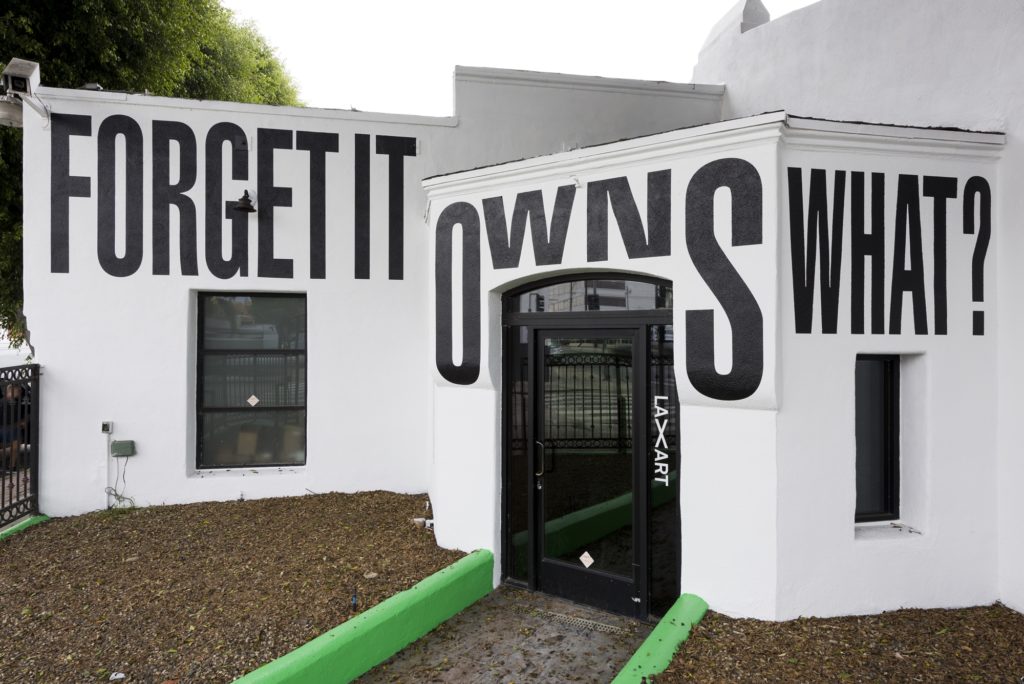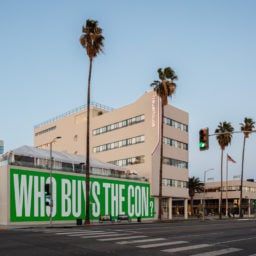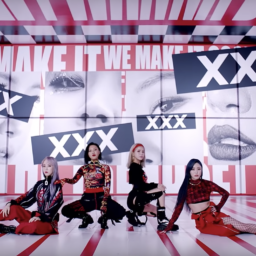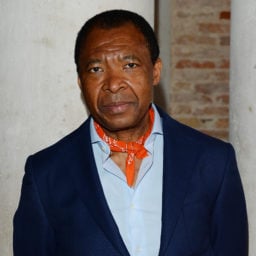BREAK IT. OWN IT. STEAL IT. LOAN IT. Barbara Kruger’s phrases in her familiar Helvetica Ultra Condensed typeface span the facade of the newly renovated LAXART building in Hollywood, nodding to classics of local commerce—pawn shops, dollar stores, and sex work—as the electric green stripe highlighting the words “PRIVATIZE MONETIZE MORALIZE” hits the standard in marijuana dispensary aesthetics.
After closing for renovations on April 10, the nonprofit LA art space reopens on June 3, and Kruger’s Untitled (It) (2018), on view through the fall, is only the most visible change LAXART has undergone. Under the executive direction of Hamza Walker, who came on board in 2016, LAXART reopens not only with a fresh facade and new interiors, but also with a newly reinvigorated mission to address the changing landscape in both the Los Angeles art scene and in culture at large.
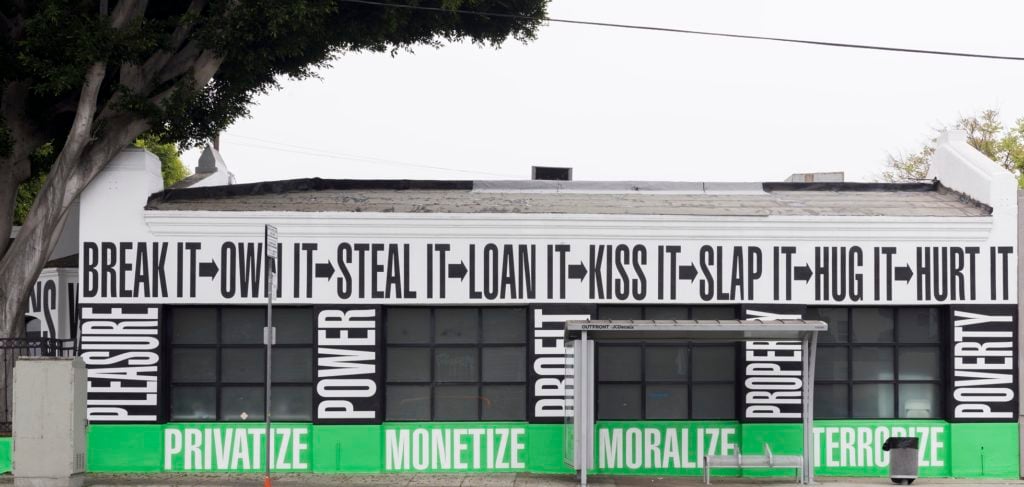
The LAXART building featuring Barbara Kruger’s Untitled (it) (2018). Photo: Ruben Diaz, courtesy of LAXART.
When LAXART was founded in 2005, part of its core mission was to serve emerging artists with nowhere to show. In 2018, with the proliferation of smaller and artist-run galleries in Los Angeles over the past decade, that foundational obligation is no longer as urgent. As a result, the interiors have changed; where there were once small galleries for several young artists to show at once (a “three-ring circus,” Walker called it), local architecture firm LOHA has reoriented the space around a single central gallery better suited to larger, more focused exhibitions and public programs, and that could double as a performance space.
“It’s not that emerging art isn’t part of the mission, it’s just no longer the center of the mission,” says Walker. “That’s the life cycle of these institutions: having a second chapter in its life.” Having fulfilled the programming commitments of LAXART’s previous direction, Walker has added six new board members and reshuffled both the physical space and its priorities. The relaunched programming reflects a commitment to embrace the freedom that alternative art spaces have—in contrast to museums, which typically plan projects years in advance—to showcase multidisciplinary art forms and host political discourse in real time.
“LAXART affords me the opportunity to think about what matters now,” Walker notes. “While this is inherent to the field of contemporary art in general… these issues are also the stock-in-trade of alternative spaces.”
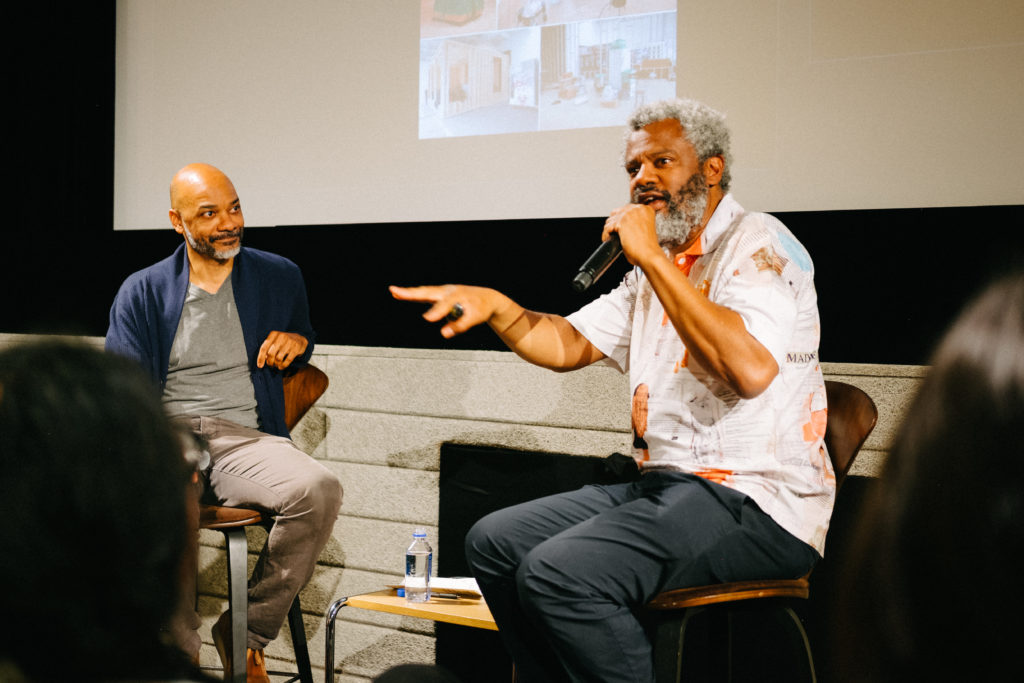
Hamza Walker (right) in conversation with artist and LAXART board member Rodney McMillian at NeueHouse. Photo by Nem Perez.
LAXART reopens with a five-week public programming series that includes poetry readings, performances by jazz ensembles and Kim Gordon, and a panel discussion, “The Wakanda Effect,” addressing the ways in which the movie Black Panther pertains to the black radical imagination.
“We could interpret Black Panther on how it performed as a commercial success or what it says about now versus Blaxploitation cinema,” says Walker. “I’m not opposed to looking at what’s going on in popular culture. It’s the site of a more active discussion on particular issues that define the day.”
The refurbished LAXART’s first show, which debuts on July 22, is called “Remote Castration,” an homage to the #MeToo movement named after a piece of graffiti Walker saw on his drive home. (In a striking contrast, the following show slated for August will be called “Sperm Cult,” after a 2017 collaborative publication by artists Richard Hawkins and Elijah Burgher.)
Seen scrawled on a tarp hanging over a chain link fence, the two words that inspired the inaugural show are meant to elicit evocative ideas, according to Walker: “castration” referring to the “naming of names” of perpetrators of sexual harassment, and “remote” describing how the movement unfolded over the Internet. The roster of artists is still in development, but, Walker says, “you don’t have to wait for that art to be made; art has harbored the discourse of feminism well in advance in the #MeToo movement.”
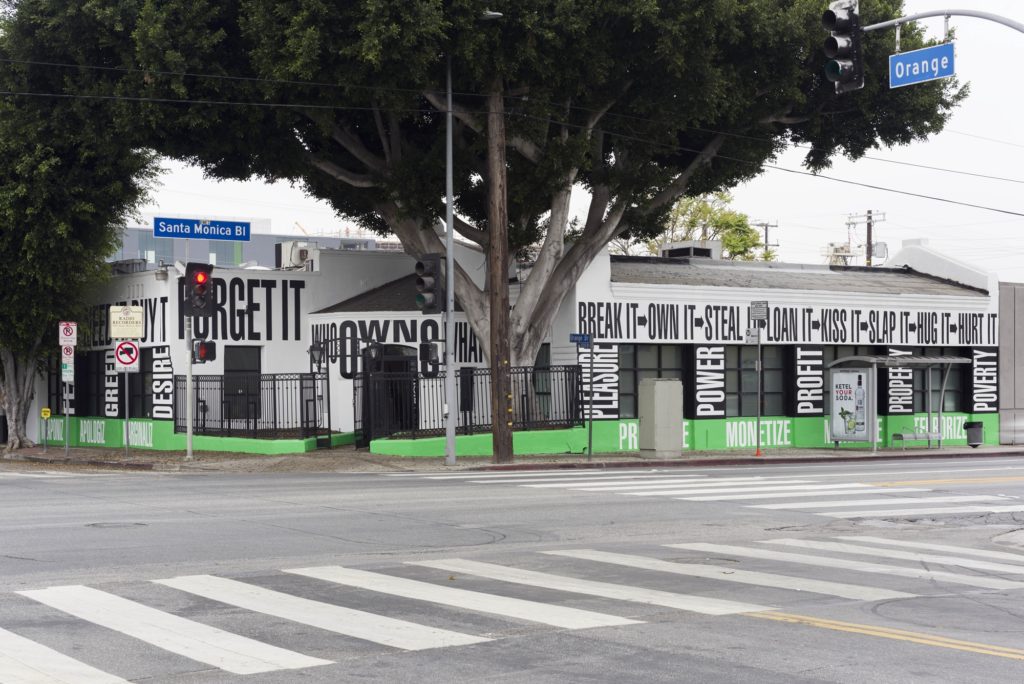
The LAXART building featuring Barbara Kruger’s Untitled (it) (2018). Photo: Ruben Diax, courtesy of LAXART.
One prime example, of course, is the writing on the wall. Walker describes Barbara Kruger as the ideal choice to execute the new LAXART facade, “given the tone and tenor of her work and the role it played in defining the 1980s against a political paradigm shift to the right.” He also describes her as “a poster child for the role that alternative spaces played in the 1980s, as brokering discussions about gender, sexuality, race, class.”
As for the alarming similarities between a retrograde past and our current moment, “for Barbara, it’s funny that everybody seems surprised,” Walker says. “But to think about that period then and this period now, what are the commonalities and what are the differences? In the relaunch, the discussion is borne out in the programs. It doesn’t have a singular answer. It forces reflection, one way or another.”
